Top 5 Common Failures in Power Pole Transformers and How to Prevent Them?
Are you tired of unexpected power outages disrupting your daily life? These interruptions often stem from failures in power pole transformers. Understanding these failures can help us prevent them and ensure a more reliable power supply.
The top 5 common failures in power pole transformers are overheating, lightning damage, corrosion, overloading, and loose connections. These issues can be prevented through regular maintenance, proper sizing, surge protection, weatherproofing, and careful installation. Addressing these problems can significantly improve transformer reliability and longevity.
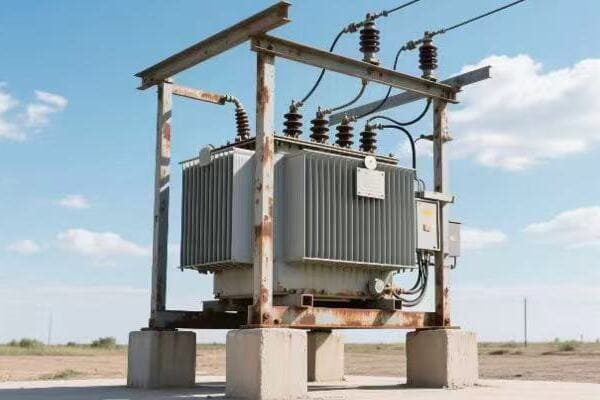
In this article, I’ll dive into each of these common failures, explaining their causes and how to prevent them. Whether you’re a field technician or just curious about power distribution, this guide will give you valuable insights into maintaining these crucial components of our electrical grid.
Introduction: Why Transformer Reliability Matters?
Have you ever considered how much we rely on a steady power supply? From charging our phones to running life-saving medical equipment, reliable electricity is crucial. At the heart of this reliability are power pole transformers, but what happens when they fail?
Transformer reliability is crucial for maintaining a stable power supply. Failures can lead to widespread outages, safety hazards, and significant economic losses. Ensuring transformer reliability through proper maintenance and design is essential for a resilient and efficient electrical grid.
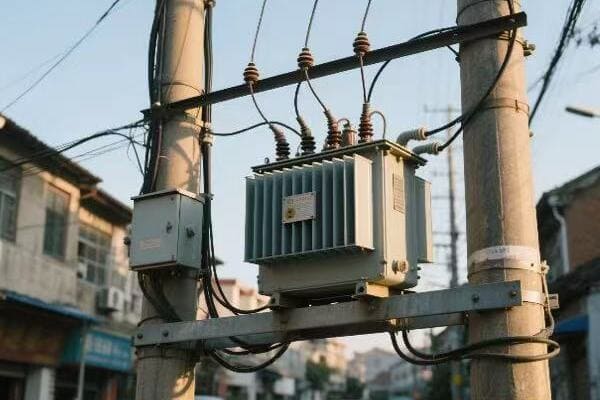
The Importance of Transformer Reliability
Let’s break down why transformer reliability is so critical:
1. Continuous Power Supply
Reliable transformers ensure a steady flow of electricity to homes and businesses. This is essential for:
- Maintaining daily activities
- Supporting critical infrastructure like hospitals and emergency services
- Keeping businesses operational
2. Safety Considerations
Transformer failures can pose serious safety risks:
- Risk of electrical fires
- Potential for electrocution
- Hazards from falling equipment
3. Economic Impact
Unreliable transformers can have significant economic consequences:
- Business interruptions leading to lost revenue
- Costs associated with emergency repairs
- Damage to electrical equipment in homes and businesses
I once worked on a project where a single transformer failure in an industrial area led to a day-long power outage. The economic impact was staggering – millions of dollars in lost production and spoiled goods. This experience really drove home the importance of transformer reliability.
4. Grid Stability
Transformers play a crucial role in maintaining overall grid stability:
- They help balance load distribution
- They’re key in voltage regulation
- Failures can lead to cascading outages
Here’s a table showing the potential impact of transformer failures:
| Impact Area | Short-Term Effects | Long-Term Consequences |
|---|---|---|
| Residential | Power outages, inconvenience | Damaged appliances, safety risks |
| Commercial | Business interruptions, data loss | Revenue loss, customer dissatisfaction |
| Industrial | Production halts, equipment damage | Economic losses, supply chain disruptions |
| Public Services | Emergency response delays | Reduced public trust, safety concerns |
Understanding these impacts helps us appreciate the critical nature of transformer reliability. In my years of experience in the power industry, I’ve seen how investing in reliable transformers and proper maintenance can save utilities and communities from significant problems down the line.
As we move towards more complex and interconnected power grids, especially with the integration of renewable energy sources, the role of reliable transformers becomes even more crucial. They’re not just passive components but active players in ensuring a stable and efficient power supply.
In the following sections, we’ll explore the most common failures that affect power pole transformers and discuss strategies to prevent them. By addressing these issues proactively, we can significantly enhance the reliability of our power distribution systems and minimize the impacts of transformer failures.
Failure #1: Overheating and Insulation Breakdown?
Have you ever touched an electronic device that felt too hot? Now imagine that heat in a massive transformer. Overheating is one of the most common and serious issues facing power pole transformers. But what causes it, and how can we prevent it?
Overheating in transformers often leads to insulation breakdown, causing short circuits and failures. It’s typically caused by overloading, poor cooling, or internal faults. Prevention involves proper load management, regular oil and cooling system maintenance, and using temperature monitoring devices.
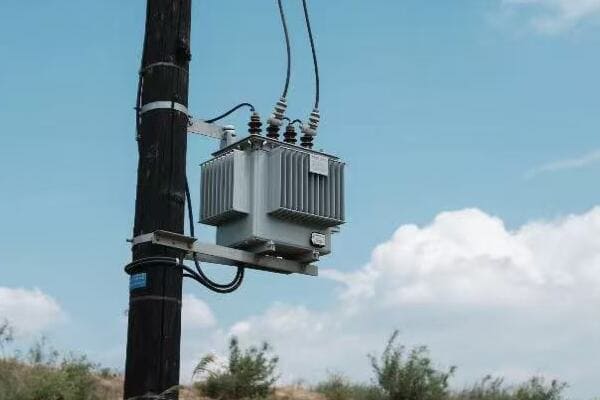
Understanding Overheating and Insulation Breakdown
Let’s dive deeper into this critical issue:
Causes of Overheating
-
Overloading:
- Exceeding the transformer’s rated capacity
- Sudden spikes in power demand
-
Cooling System Failures:
- Clogged radiators
- Low oil levels
- Malfunctioning cooling fans
-
Internal Faults:
- Short circuits in windings
- Deterioration of insulating materials
I once encountered a transformer that was consistently running hot. Upon investigation, we found that recent development in the area had increased power demand beyond the transformer’s capacity. This overloading was causing significant heat stress.
Effects of Overheating
Overheating can have severe consequences:
-
Insulation Breakdown:
- Degradation of oil and paper insulation
- Reduced dielectric strength
-
Accelerated Aging:
- Each 10°C increase above rated temperature can halve the transformer’s life
-
Increased Losses:
- Higher temperatures increase electrical resistance, leading to more energy loss
Prevention Strategies
Here are key strategies to prevent overheating:
-
Load Management:
- Regular load surveys
- Upgrading transformers in growing areas
-
Cooling System Maintenance:
- Regular oil testing and replacement
- Cleaning of cooling fins and radiators
-
Temperature Monitoring:
- Installing temperature sensors
- Using thermal imaging for regular checks
-
Improved Insulation:
- Using high-temperature insulation materials
- Implementing more efficient cooling designs
Here’s a table summarizing the impact of temperature on transformer lifespan:
| Operating Temperature | Expected Lifespan |
|---|---|
| Rated Temperature | 20-30 years |
| 10°C above rated | 10-15 years |
| 20°C above rated | 5-7 years |
| 30°C above rated | 2-3 years |
In my experience, implementing a comprehensive temperature monitoring system can make a huge difference. In one project, we installed smart sensors that provided real-time temperature data. This allowed the utility to detect and address heating issues before they led to failures, significantly improving reliability.
Another effective approach I’ve used is the implementation of dynamic loading. This involves adjusting the transformer’s load based on real-time temperature and ambient conditions. It allows for higher capacity utilization during cooler periods while preventing overheating during hot weather or peak demand times.
It’s also worth noting the importance of proper initial sizing. I’ve seen cases where transformers were undersized for growing communities, leading to chronic overheating issues. Proper planning and regular reassessment of load requirements are crucial for preventing these problems.
Lastly, don’t underestimate the impact of environmental factors. In areas with high ambient temperatures, additional cooling measures may be necessary. I once worked on a project in a desert region where we had to design custom cooling systems to handle the extreme heat.
By addressing overheating proactively, we can significantly extend the life of power pole transformers and improve the overall reliability of our power distribution systems. Remember, a cool transformer is a happy transformer!
Failure #2: Lightning or Surge Damage?
Have you ever wondered what happens when lightning strikes near a power line? Lightning and electrical surges pose a significant threat to power pole transformers. But how exactly do they cause damage, and what can we do to protect against them?
Lightning or surge damage can cause catastrophic failure in transformers through insulation breakdown and winding damage. It often results from direct lightning strikes or induced voltage surges. Prevention involves installing surge arresters, improving grounding systems, and using shielding techniques.
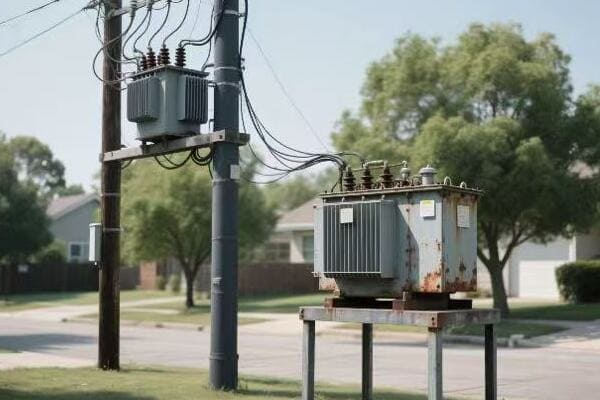
Understanding Lightning and Surge Damage
Let’s explore this electrifying topic in more detail:
How Lightning Affects Transformers
-
Direct Strikes:
- Can cause immediate, catastrophic damage
- May lead to explosive failure of the transformer
-
Induced Surges:
- Lightning strikes nearby can induce high voltages in power lines
- These surges can travel to the transformer, causing internal damage
-
Secondary Effects:
- Damage to control and monitoring systems
- Degradation of insulation materials
I once investigated a transformer failure that occurred during a severe thunderstorm. The damage was extensive, with clear signs of a lightning-induced surge. It was a stark reminder of nature’s power and the importance of proper protection.
Types of Surge Damage
Surges can cause various types of damage:
-
Insulation Breakdown:
- High voltages can puncture or degrade insulation materials
-
Winding Damage:
- Surges can cause short circuits between winding turns
-
Bushing Failures:
- High-voltage surges can crack or damage bushings
-
Oil Degradation:
- Electrical arcing in the oil can lead to its breakdown
Prevention and Protection Strategies
Here are key strategies to protect against lightning and surge damage:
-
Surge Arresters:
- Installing arresters on transformer terminals
- Regular testing and replacement of arresters
-
Improved Grounding:
- Ensuring low-impedance grounding systems
- Regular ground resistance testing
-
Shielding:
- Using overhead ground wires for lightning protection
- Shielding sensitive control wires
-
Insulation Coordination:
- Proper selection of insulation levels for equipment
Here’s a table comparing different surge protection methods:
| Protection Method | Effectiveness | Cost | Maintenance Needs |
|---|---|---|---|
| Surge Arresters | High | Moderate | Regular testing |
| Improved Grounding | Very High | High | Periodic checks |
| Overhead Shield Wires | High | High | Low |
| Insulation Coordination | Moderate | Low | Design phase only |
In my experience, a multi-layered approach to surge protection is most effective. I recall a project where we implemented a combination of high-quality surge arresters and an enhanced grounding system. During the next storm season, we saw a significant reduction in surge-related transformer failures.
It’s also important to consider the geographical location when designing surge protection. In areas with high lightning activity, more robust protection measures are necessary. I once worked in a region known for its frequent thunderstorms. We had to design a custom lightning protection system that included additional arresters and a more extensive grounding network.
Another aspect often overlooked is the protection of control and monitoring systems. These low-voltage circuits can be particularly vulnerable to surge damage. Implementing separate surge protection for these systems can prevent costly failures and improve overall reliability.
Regular maintenance and testing of surge protection devices are crucial. I’ve seen cases where old or faulty surge arresters actually contributed to transformer failures instead of preventing them. Establishing a routine inspection and replacement schedule is essential for ensuring continued protection.
Lastly, it’s worth mentioning the importance of rapid response to lightning strikes. Even with the best protection, some damage may occur. Having a plan for quick assessment and necessary repairs after a lightning event can minimize downtime and prevent small issues from escalating into major failures.
By implementing comprehensive surge protection strategies, we can significantly reduce the risk of lightning and surge damage to power pole transformers. This not only extends the life of these critical components but also ensures a more reliable and resilient power distribution system.
Failure #3: Corrosion and Weather Exposure?
Have you ever noticed how metal objects left outside start to rust over time? Now imagine this happening to a crucial piece of electrical equipment like a power pole transformer. Corrosion and weather exposure are silent but persistent threats to transformer reliability. But what exactly causes this damage, and how can we protect against it?
Corrosion and weather exposure can severely damage transformer components, leading to leaks, structural weakness, and electrical faults. These issues are often caused by moisture, pollutants, and extreme temperatures. Prevention involves using corrosion-resistant materials, applying protective coatings, and implementing regular inspection and maintenance routines.
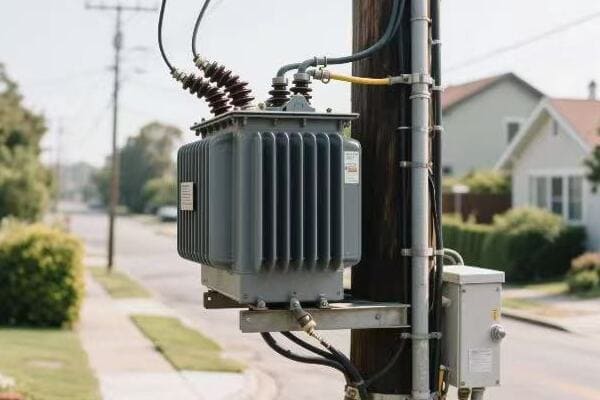
Understanding Corrosion and Weather Exposure
Let’s delve into the details of this pervasive problem:
Causes of Corrosion and Weather Damage
-
Moisture Exposure:
- Rain, snow, and high humidity
- Condensation inside the transformer
-
Atmospheric Pollutants:
- Salt in coastal areas
- Industrial pollutants in urban environments
-
Temperature Fluctuations:
- Expansion and contraction of materials
- Accelerated chemical reactions in high temperatures
-
UV Radiation:
- Degradation of external coatings and insulation
I once inspected a transformer in a coastal area that showed severe corrosion after just a few years of service. The salt-laden air had accelerated the corrosion process, highlighting the need for specialized protection in such environments.
Effects of Corrosion and Weather Exposure
Corrosion and weather can cause various issues:
-
Tank Integrity:
- Rust and pitting leading to oil leaks
- Structural weakening of the transformer tank
-
Electrical Connections:
- Corrosion of terminals and bushings
- Increased contact resistance leading to heating
-
Insulation Degradation:
- Breakdown of paper and oil insulation
- Reduced dielectric strength
-
Cooling System Efficiency:
- Clogging of radiator fins
- Reduced heat dissipation capacity
Prevention and Protection Strategies
Here are key strategies to protect against corrosion and weather damage:
-
Material Selection:
- Using corrosion-resistant alloys for tank construction
- Selecting weather-resistant gaskets and seals
-
Protective Coatings:
- Applying high-quality, weather-resistant paints
- Using galvanization for exposed metal parts
-
Design Considerations:
- Implementing sealed designs to minimize moisture ingress
- Proper drainage and ventilation to prevent water accumulation
-
Regular Maintenance:
- Scheduled inspections for signs of corrosion
- Prompt repair of any damaged coatings or seals
Here’s a table comparing different corrosion protection methods:
| Protection Method | Effectiveness | Longevity | Cost |
|---|---|---|---|
| Stainless Steel Construction | Very High | 20+ years | High |
| Galvanization | High | 10-15 years | Moderate |
| Epoxy Coating | High | 5-10 years | Low to Moderate |
| Regular Painting | Moderate | 2-5 years | Low |
In my experience, a combination of these methods often provides the best protection. I recall a project where we used a stainless steel tank with additional epoxy coating for transformers in a highly corrosive industrial environment. The extra cost was justified by the significantly extended service life and reduced maintenance needs.
It’s also crucial to consider the specific environmental challenges of each location. In one coastal project, we implemented a custom maintenance schedule that included more frequent inspections and reapplication of protective coatings. This proactive approach helped prevent corrosion-related failures and extended the transformers’ lifespan.
Another often overlooked aspect is the importance of proper installation. Ensuring that transformers are mounted at the correct height, with proper drainage and ventilation, can significantly reduce moisture-related issues. I’ve seen cases where simple adjustments in installation practices led to notable improvements in corrosion resistance.
Advancements in materials science have also opened up new possibilities for corrosion protection. In recent years, I’ve been experimenting with nano-coatings that provide exceptional corrosion resistance. While still relatively expensive, these cutting-edge solutions show promise for extreme environments.
Lastly, it’s worth mentioning the role of environmental monitoring. Implementing systems to track humidity, temperature, and air quality can help predict and prevent corrosion issues before they become severe. In one project, we installed smart sensors that alerted maintenance teams to conditions conducive to corrosion, allowing for timely interventions.
By implementing comprehensive corrosion and weather protection strategies, we can significantly extend the life of power pole transformers and reduce maintenance costs. This not only improves the reliability of our power distribution systems but also contributes to more sustainable and cost-effective infrastructure management.
Failure #4: Overloading from Improper Sizing?
Have you ever tried to power too many appliances from a single outlet? Now imagine this scenario on a much larger scale with a power pole transformer. Overloading due to improper sizing is a common yet often overlooked issue that can lead to premature transformer failure. But why does it happen, and how can we prevent it?
Overloading from improper sizing occurs when a transformer consistently operates above its rated capacity. This can lead to overheating, insulation breakdown, and reduced lifespan. Prevention involves accurate load forecasting, proper initial sizing, regular load monitoring, and timely upgrades when necessary.
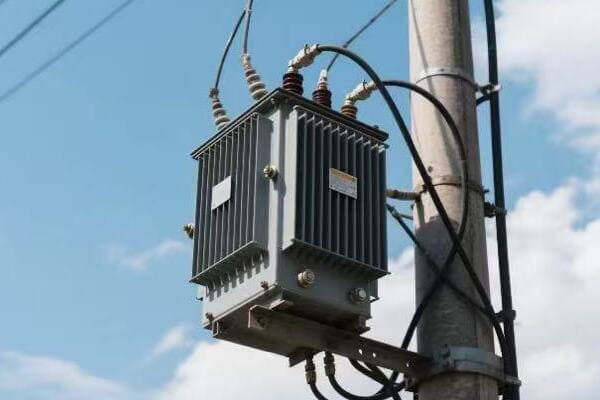
Understanding Overloading from Improper Sizing
Let’s explore this issue in more detail:
Causes of Overloading
-
Underestimating Future Growth:
- Failing to account for population increase in an area
- Not considering new developments or industrial expansions
-
Changing Usage Patterns:
- Increased adoption of high-power devices (e.g., electric vehicles)
- Shifts in energy consumption habits
-
Inadequate Planning:
- Using outdated load calculation methods
- Neglecting to reassess transformer capacity periodically
I once encountered a situation in a rapidly growing suburban area where the original transformer sizing didn’t account for the surge in electric vehicle adoption. Within a few years, the transformer was consistently overloaded during evening charging hours.
Effects of Overloading
Overloading can have serious consequences:
-
Accelerated Aging:
- Insulation degradation due to excessive heat
- Reduced transformer lifespan
-
Increased Losses:
- Higher copper and core losses
- Reduced energy efficiency
-
Risk of Catastrophic Failure:
- Potential for oil breakdown and internal arcing
- Increased risk of transformer explosion
-
Power Quality Issues:
- Voltage drops during peak load times
- Potential for wider grid instability
Prevention Strategies
Here are key strategies to prevent overloading:
-
Accurate Load Forecasting:
- Using advanced modeling techniques
- Considering demographic trends and development plans
-
Conservative Initial Sizing:
- Choosing transformers with some extra capacity for future growth
- Implementing modular designs for easy upgrades
-
Regular Load Monitoring:
- Installing smart meters for real-time load data
- Conducting periodic load surveys
-
Timely Upgrades:
- Establishing clear thresholds for transformer replacement
- Planning for upgrades before critical overload situations occur
Here’s a table showing the impact of overloading on transformer lifespan:
| Overload Percentage | Continuous Operation Time | Expected Lifespan Reduction |
|---|---|---|
| 10% | 24 hours | 50% |
| 20% | 2 hours | 25% |
| 30% | 1 hour | 40% |
| 50% | 5 minutes | Potential immediate failure |
In my experience, implementing a comprehensive load management system can make a significant difference. In one project, we installed smart monitoring devices on all transformers in a district. This allowed us to track load patterns in real-time and identify potential overload situations before they became critical.
Another effective approach I’ve used is the concept of "staged capacity." This involves installing a transformer base that can accommodate larger units, even if the initial load doesn’t require it. As the load grows, the transformer can be easily upgraded without needing to replace the entire installation.
It’s also crucial to consider the impact of distributed energy resources, such as rooftop solar panels. In one community, we had to redesign the transformer sizing strategy to account for bidirectional power flow and intermittent generation. This required a more sophisticated approach to load calculation and transformer selection.
Regular communication with local planning departments and developers is essential. I’ve found that staying informed about upcoming developments and changes in zoning can provide valuable insights for future load growth. This proactive approach has helped utilities stay ahead of capacity needs.
Lastly, it’s worth mentioning the importance of educating consumers about energy efficiency and load management. In one project, we implemented a community outreach program to encourage off-peak usage of high-power appliances. This helped flatten the load curve and reduced the strain on transformers during peak hours.
By addressing the issue of proper sizing and load management, we can significantly extend the life of power pole transformers and improve the overall reliability of our power distribution systems. Remember, a well-sized transformer is a long-lasting transformer!
Failure #5: Loose Connections or Poor Installation?
Have you ever had a flickering light due to a loose bulb? Now imagine this on a much larger scale with a power pole transformer. Loose connections or poor installation might seem like minor issues, but they can lead to major problems in transformer performance and longevity. How do these issues arise, and what can we do to prevent them?
Loose connections or poor installation in transformers can cause overheating, arcing, and eventual failure. These issues often result from improper initial setup, vibration over time, or inadequate maintenance. Prevention involves proper installation techniques, regular inspections, thermal imaging, and timely tightening of connections.
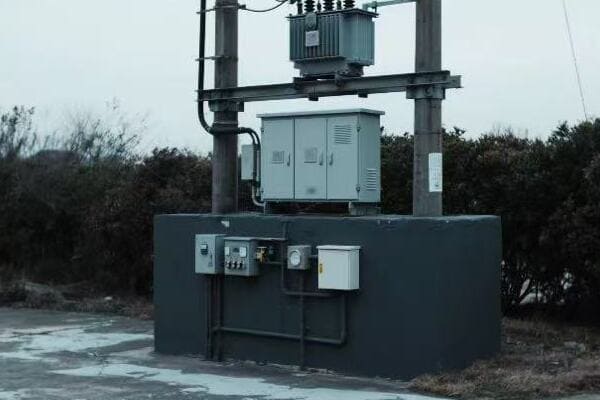
Understanding Loose Connections and Poor Installation
Let’s delve into the details of this often-overlooked issue:
Causes of Loose Connections and Poor Installation
-
Initial Installation Errors:
- Improper torque application
- Misalignment of components
-
Environmental Factors:
- Thermal cycling causing expansion and contraction
- Vibration from nearby equipment or wind
-
Material Degradation:
- Corrosion of connectors
- Aging of gaskets and seals
-
Inadequate Maintenance:
- Failure to perform regular inspections
- Neglecting to retighten connections periodically
I once investigated a transformer failure that was traced back to a single loose bushing connection. Over time, this minor issue led to arcing, which eventually caused a catastrophic failure. It was a stark reminder of how small oversights can have big consequences.
Effects of Loose Connections and Poor Installation
These issues can lead to various problems:
-
Increased Resistance:
- Generation of excess heat at connection points
- Higher energy losses
-
Arcing and Sparking:
- Damage to surrounding components
- Risk of fire or explosion
-
Oil Leaks:
- Loss of insulating oil
- Environmental contamination
-
Reduced Efficiency:
- Increased power losses
- Potential for voltage fluctuations
Prevention Strategies
Here are key strategies to prevent issues related to loose connections and poor installation:
-
Proper Installation Procedures:
- Using calibrated torque tools
- Following manufacturer guidelines strictly
-
Regular Inspections:
- Visual checks for signs of overheating or damage
- Thermal imaging to detect hot spots
-
Vibration Mitigation:
- Installing vibration dampeners
- Ensuring proper mounting and support
-
Maintenance Schedule:
- Regular retightening of connections
- Replacing worn gaskets and seals
Here’s a table showing the importance of proper torque in connections:
| Connection Type | Proper Torque Range | Consequences of Improper Torque |
|---|---|---|
| Bushing Terminals | 40-50 Nm | Overheating, arcing |
| Tank Bolts | 60-70 Nm | Oil leaks, structural issues |
| Tap Changer Contacts | 30-40 Nm | Poor voltage regulation |
| Ground Connections | 20-30 Nm | Increased safety risks |
In my experience, implementing a comprehensive installation and maintenance protocol can significantly reduce these issues. In one large-scale project, we developed a detailed checklist for installers and maintenance teams. This standardized approach led to a noticeable decrease in connection-related problems across the entire transformer fleet.
Another effective technique I’ve used is the application of anti-vibration compounds on critical connections. In areas prone to high winds or seismic activity, these compounds help maintain tight connections even under challenging conditions.
It’s also crucial to consider the impact of thermal cycling. In regions with extreme temperature variations, we’ve implemented special connection designs that allow for thermal expansion without loosening. This approach has proven particularly effective in preventing seasonal connection issues.
Training and certification of installation and maintenance personnel is another key factor. I’ve found that investing in regular training sessions and skill assessments for technicians pays off in terms of improved installation quality and reduced failure rates.
Lastly, the use of advanced monitoring technologies can play a crucial role. In recent projects, we’ve implemented smart sensors that continuously monitor connection integrity. These systems can detect early signs of loosening or overheating, allowing for proactive maintenance before serious issues develop.
By addressing the challenges of loose connections and poor installation, we can significantly enhance the reliability and longevity of power pole transformers. Remember, in the world of electrical connections, tight is right!
Preventive Maintenance Tips for Field Technicians?
Are you a field technician looking to improve your transformer maintenance skills? Or perhaps you’re a utility manager wondering how to keep your transformers in top shape? Effective preventive maintenance is key to extending the life of power pole transformers and ensuring reliable power distribution. But what are the best practices for maintaining these crucial components?
Preventive maintenance for power pole transformers involves regular inspections, oil testing, thermal imaging, and timely repairs. Key practices include checking for oil leaks, monitoring insulation resistance, inspecting bushings and connections, and keeping detailed maintenance records. Proper maintenance can significantly extend transformer life and prevent unexpected failures.
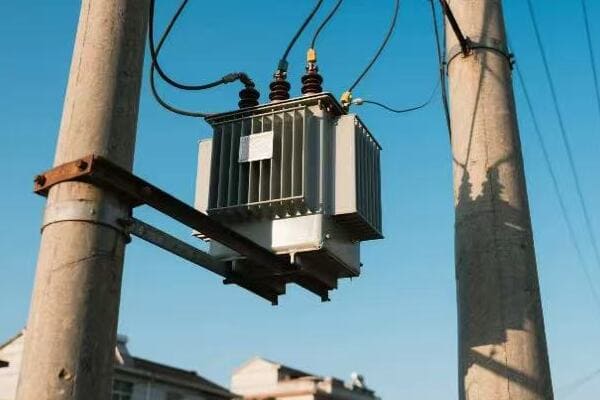
Essential Preventive Maintenance Tips
Let’s explore some crucial maintenance practices for field technicians:
1. Regular Visual Inspections
- Check for oil leaks around seals and gaskets
- Inspect bushings for cracks or contamination
- Look for signs of rust or physical damage
- Ensure proper oil levels in sight glasses
I once caught a small oil leak during a routine inspection that could have led to a major failure if left unchecked. Never underestimate the power of a thorough visual inspection!
2. Oil Testing and Analysis
- Perform regular dissolved gas analysis (DGA)
- Check oil dielectric strength
- Monitor moisture content in oil
- Test for acidity and interfacial tension
3. Thermal Imaging
- Use infrared cameras to detect hot spots
- Focus on connections, bushings, and radiators
- Compare temperatures to baseline readings
- Document and trend temperature changes over time
4. Electrical Testing
- Measure insulation resistance
- Perform turns ratio tests
- Check winding resistance
- Conduct power factor tests on bushings
5. Mechanical Maintenance
- Tighten loose connections
- Clean cooling fins and radiators
- Lubricate moving parts (e.g., tap changers)
- Check and adjust oil levels
Here’s a table outlining a basic maintenance schedule:
| Maintenance Task | Frequency | Importance |
|---|---|---|
| Visual Inspection | Monthly | High |
| Oil Sampling | Annually | Critical |
| Thermal Imaging | Quarterly | High |
| Electrical Testing | Every 3-5 years | Critical |
| Connection Tightening | Annually | High |
In my experience, consistency in maintenance is key. I recall a utility that implemented a rigorous monthly inspection program. Within a year, they saw a 30% reduction in unexpected transformer failures.
Another crucial aspect is proper documentation. I always emphasize the importance of keeping detailed maintenance records. These records can reveal trends and help predict potential issues before they become critical.
One often overlooked area is the maintenance of auxiliary equipment. Things like cooling fans, pressure relief devices, and temperature gauges are crucial for proper transformer operation. I make it a point to include these in every maintenance routine.
Training is also vital. I’ve found that regular refresher courses for technicians on the latest maintenance techniques and safety procedures can significantly improve the quality of maintenance work.
Lastly, don’t underestimate the value of cleanliness. Keeping transformers and their surroundings clean can prevent many issues. I once saw a case where leaf litter accumulation led to overheating by blocking cooling fins. A simple cleaning routine could have prevented this.
Remember, good maintenance is not just about fixing problems – it’s about preventing them. By following these tips and staying vigilant, field technicians can play a crucial role in ensuring the reliability of our power distribution systems.
When to Repair vs Replace: Cost-Benefit Analysis?
Have you ever faced the tough decision of whether to repair an old appliance or buy a new one? Now imagine making that decision for a piece of equipment that costs hundreds of thousands of dollars and powers entire neighborhoods. This is the dilemma utilities often face with aging power pole transformers. But how do you decide when to repair and when to replace?
The decision to repair or replace a transformer depends on factors like age, condition, repair costs, and expected lifespan post-repair. Generally, repairs are favored for newer units with minor issues, while replacement is often more cost-effective for older transformers or those with major damage. A thorough cost-benefit analysis is crucial for making this decision.
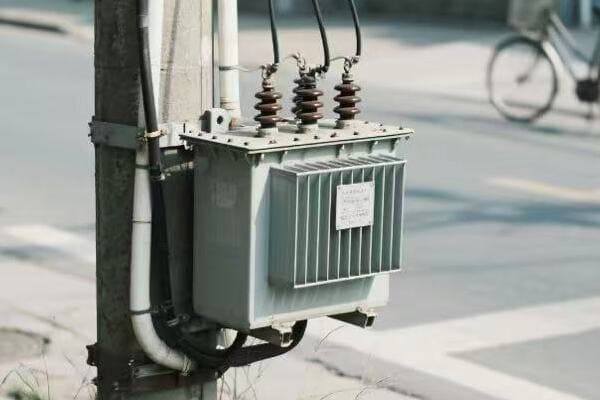
Analyzing the Repair vs Replace Decision
Let’s break down the key considerations in this critical decision-making process:
Factors to Consider
-
Age of the Transformer:
- Typical lifespan of 20-30 years
- Older units may have outdated technology
-
Extent of Damage:
- Minor issues vs. major failures
- Availability of replacement parts
-
Cost Comparison:
- Repair costs vs. new transformer price
- Consider future maintenance needs
-
Performance and Efficiency:
- Energy efficiency of old vs. new units
- Potential for improved features in new models
-
Regulatory Compliance:
- Changes in environmental or safety regulations
- Compatibility with smart grid technologies
I once worked with a utility facing a decision on a 25-year-old transformer with a minor oil leak. While the repair seemed simple, our analysis showed that replacing it with a more efficient model would pay off within five years due to reduced losses.
Cost-Benefit Analysis
Here’s a simplified approach to cost-benefit analysis:
-
Calculate Total Cost of Repair:
- Immediate repair costs
- Estimated future maintenance
- Projected efficiency losses
-
Estimate Replacement Costs:
- Purchase price of new transformer
- Installation and commissioning costs
- Disposal costs of old unit
-
Compare Long-term Benefits:
- Energy savings from improved efficiency
- Reduced maintenance needs
- Increased reliability
-
Consider Non-financial Factors:
- Environmental impact
- Improved safety features
- Enhanced monitoring capabilities
Here’s a table to help visualize the comparison:
| Factor | Repair | Replace |
|---|---|---|
| Upfront Cost | Lower | Higher |
| Long-term Efficiency | Lower | Higher |
| Expected Lifespan | 5-10 years | 20-30 years |
| Maintenance Needs | Higher | Lower |
| Compatibility with New Tech | Limited | Full |
In my experience, the decision often comes down to more than just numbers. I recall a case where a utility chose to replace a transformer that could have been repaired because the new unit offered advanced monitoring capabilities that aligned with their smart grid initiatives.
It’s also important to consider the broader context. In one project, we decided to repair several transformers in a rural area because the lead time for new units was too long, and maintaining power reliability was crucial for the community.
Another factor to consider is the potential for upgrades. Sometimes, repairing an old transformer can be combined with upgrades that improve its performance. I’ve seen cases where adding modern cooling systems or upgrading insulation materials gave old transformers a new lease on life.
The environmental impact is becoming an increasingly important consideration. In recent years, I’ve been involved in projects where the decision to replace was influenced by the opportunity to switch to more environmentally friendly insulating fluids.
Lastly, it’s crucial to have a standardized decision-making process. I often recommend utilities develop a scoring system that weighs various factors like age, condition, efficiency, and strategic importance. This helps ensure consistent and objective decision-making across their transformer fleet.
Remember, the goal is to balance short-term costs with long-term benefits. While repairing might seem cheaper initially, replacing with a more efficient and reliable unit often proves more economical in the long run. Each situation is unique, and a thorough analysis is key to making the right choice.
Conclusion
Understanding and addressing the top 5 common failures in power pole transformers is crucial for maintaining a reliable electrical grid. Through proper maintenance, timely repairs, and strategic replacements, we can significantly extend transformer life and prevent unexpected outages. Regular inspections and proactive measures are key to ensuring long-term reliability and efficiency.
Recent Post
Quick Message
Request A free quote
We'd like to work with you
- +86 15558785111
- chbebgroup@chbebpower.com
- +86 15558785111
What We Do
CHINA BEI ER BIAN (CHBEB) GROUP, with 218 million in registered capital, originated from Beijing Beierbian Transformer Group. Headquartered in Beijing for R&D, it operates major production bases in Nanjing and Yueqing, producing high-quality products.
Latest Post
Latest Product
Contact Us
- +86 15558785111
- chbebgroup@chbebpower.com
- +86 15558785111
BeiJing
No 3,RongJing East Road,BeiJing Economic Technological Development Area,BeiJing,China
JiangSu
No 7️Xiangfeng Road,Jiangning,NanJing,JiangSu,China
WenZhou
No.211, Wei 16 Road, Industrial Zone, Yueqing, Wenzhou, Zhejiang, China.
XiangYang Industrial Zone ,YueQing,WenZhou,ZheJiang,China

